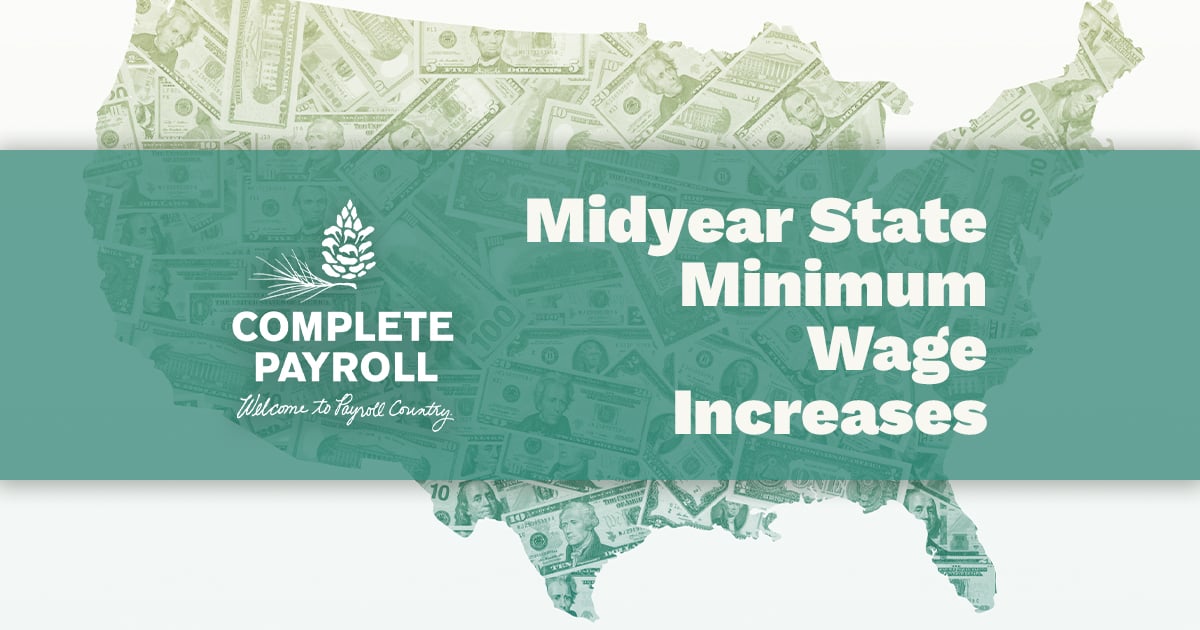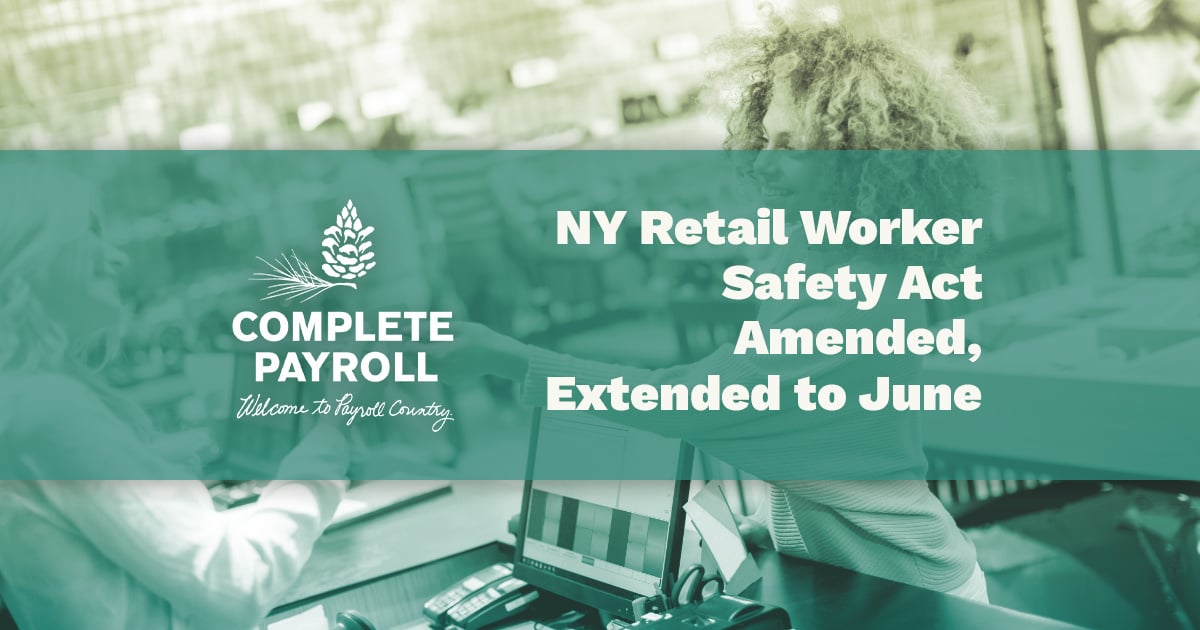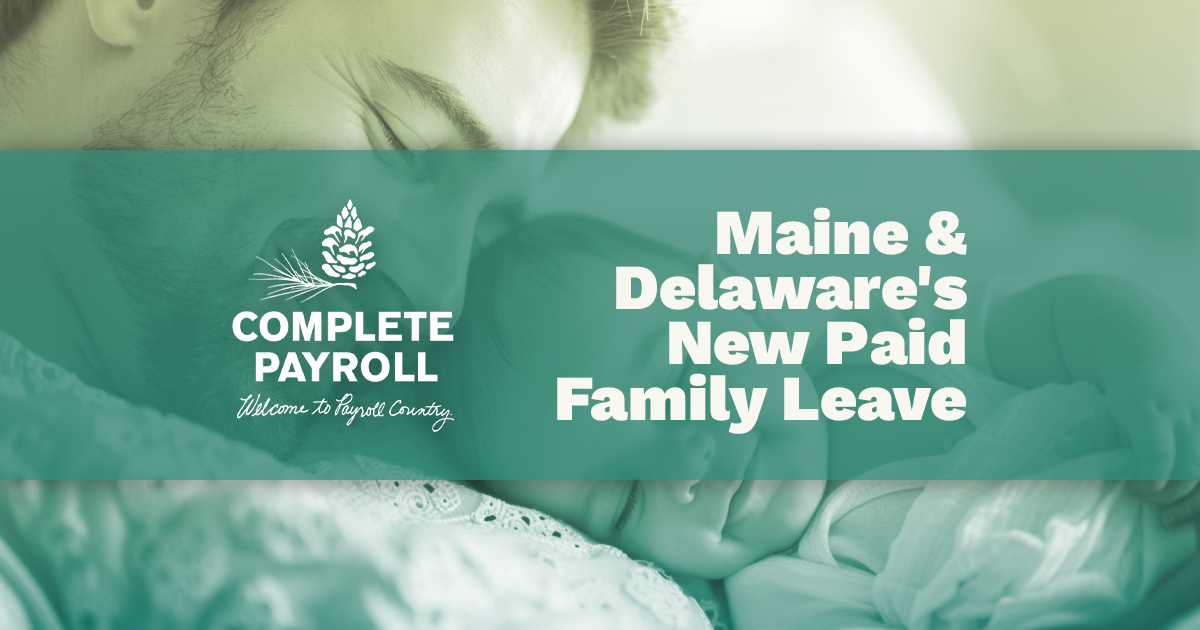New York State Paid Sick Leave Law - A Guide
The New York State Safe and Sick Leave Law (NYSSL) mandates that employers provide paid sick leave to employees. The new obligation is separate and distinct from the Quarantine Leave Law enacted in response to COVID-19. This page breaks down the employer- and employee-related details of the law in its simplest terms.
Overview of the Law, What's Changed, Employer Requirements and For Employees.
Overview of the Law
Part of New York State’s 2021 Education, Labor, Housing and Family Assistance Budget Bill includes new requirements applicable to all New York employers regarding paid sick leave.
The New York State Safe and Sick Leave Law (NYSSL) mandates that employers provide sick leave to employees. The new obligation is separate and distinct from the Quarantine Leave Law enacted in response to COVID-19.
This statewide sick leave law applies to all employers with employees in the state of New York and went into effect on Sept. 30, 2020. Employers must allow the use of sick leave as of Jan. 1, 2021.
The new sick leave law does not preempt existing local sick leave laws that meet or exceed these new requirements and permits cities with a population of 1 million or more to enact a local sick leave law or ordinance that meets or exceeds the requirements.
The key points of the law:
- The amount of NYSSL employees will be entitled to depend on employer size and income.
- NYSSL will accrue at a rate of one hour of every 30 hours worked unless an employer elects to front-load all sick time at the beginning of the year.
- Employers may set a reasonable minimum increment for use that cannot exceed four hours.
- NYSSL can be used for an employee’s or a covered employee’s family member’s* mental or physical illness, injury, diagnosis, care, treatment, or preventive care for mental or physical illness or injury.
- NYSSL can be used for absences related to an employee’s or covered family member’s status as a victim of domestic violence, family offense, sexual offense, stalking, or human trafficking.
- Unused NYSSL leave must be carried over to the following year.
- Employees may request in writing or verbally that an employer provides a summary of the amount of NYSSL leave accrued and used by the employee, which the employer must provide within three business days of the request.
- Employers may not require employees to disclose any confidential information in verifying the need for NYSSL.
- Employees have a right to reinstatement and protections against retaliation for exercising rights under the NYSSL.
- Employers must provide domestic workers with 40 hours of safe and sick leave.
- Employers must allow employees to use sick leave as it is accrued.
- Note: If an employer opts to front-load sick leave, they may not reduce the amount of sick leave available to an employee for any reason.
- Employers must reimburse employees who must pay for required documentation after three consecutive workdays of leave.
- Employers must list on employees’ pay stubs (or any document issued each pay period) the amounts of accrued and used leave and the total balance of accrued leave.
Employers should review and update their existing handbooks, policies, and procedures to ensure compliance with NYSSL. With the increasing number of local employment-related ordinances, legal compliance is becoming increasingly complex. Employers should reach out to their counsel for solutions and recommendations.
Helpful Articles
What's Changed?
This law amends but does not replace the 2018 sick/safe law but amends it in important ways.
The law changes the number of hours of sick/safe leave employers must provide employees based on the number of employees and, in some cases, revenue. It changes reporting requirements and outlaws retaliation. It also requires employers to provide leave on Day One and eliminates any waiting period.
The changes to the law supersede any municipal laws, so New York City employers should pay special attention to the changes.
The amendments also expand the definition of family members.
About This Page
This page breaks down the employer- and employee-related details of the law in its simplest terms. To learn more, watch the video below.
Amount of Sick/Safe Leave
All businesses must comply with the law regardless of size, but the amount of sick leave time varies depending on the number of employees and, in some cases, net income. In addition, there are different compliance dates for different parts of the law:
Effective Sept. 30, 2020:
- Employers must provide domestic workers with 40 hours of paid sick leave.
- Employers must allow employees to use safe and sick leave as it is accrued.
- Employers must reimburse employees who must pay for required documentation after three consecutive workdays of leave.
- Employers must list on employees’ pay stubs (or any document issued each pay period) the amounts of accrued and used leave and the total balance of accrued leave.
Effective Jan. 1, 2021:
- Employers with 4-99 employees must provide 40 hours of paid sick leave.
- Employers with 100 employees or more must provide 56 hours of paid sick leave.
- Employers with fewer than four employees and a net income of less than $1 million in the previous tax year must provide 40 hours of unpaid sick leave.
- Employers with fewer than four employees and a net income in excess of $1 million in the previous tax year must provide 40 hours of paid sick leave.
- Employers with fewer than four employees in any calendar year and a net income of less than $1 million in the previous tax year are not required to provide paid sick leave.
- Employers may not require employees to disclose any confidential information in verifying the need for NYSSL.
- Unused sick leave must roll over into the following year.
- Sick leave will accrue at a rate of one hour for every 30 hours worked unless the employer elects to front-load the hours at the beginning of the calendar year.
- Sick leave accrues beginning at the commencement of employment or on Sept. 30, 2020, whichever is later.
- The number of employees is based on a calendar year, defined as the 12-month period from Jan. 1 to Dec. 31. But for purposes of accrual and usage limitations, an employer may use the period from Jan. 1 to Dec. 31 or establish its own calendar year, which can be any regular and consecutive 12-month period.
Safe Leave and When Employees May Use It
These are part of the 2018 changes to the sick and safe law, but it’s important to keep them in mind as they still apply to the amended law.
Employees may use safe leave if they or a family member may be the victim of any act or threat of domestic violence, unwanted sexual contact, stalking, or human trafficking and they need to take actions necessary to restore the physical, psychological, or economic health or safety of themselves or family members or to protect those who associate or work with the employee, including to:
- Obtain services from a domestic violence shelter, rape crisis center, or other services program.
- Participate in safety planning, relocate, or take other actions to protect the employee’s safety or that of the employee’s family members, including enrolling children in a new school.
- Meet with an attorney or social service provider to obtain information and advice related to custody, visitation, matrimonial issues, orders of protection, immigration, housing, or discrimination in employment, housing, or consumer credit.
- File a domestic incident report with law enforcement or meet with a district attorney’s office.
- Attend civil or criminal court dates related to any act or threat of domestic violence, unwanted sexual contact, stalking, or human trafficking.
The Expanded Definition of Family Member
The new law expands the definition of “family member” to include:
- An employee's child, spouse, domestic partner, parent, sibling, grandchild, or grandparent.
- The child or parent of an employee's spouse or domestic partner.
- "Parent" shall mean a biological, foster, step-, or adoptive parent or a legal guardian of an employee or a person who stood in loco parentis when the employee was a minor child.
- "Child" shall mean a biological, adopted, or foster child, a legal ward, or a child of an employee standing in loco parentis.
Employee Use of NYSSL
The law allows employers to set a reasonable, minimum increment for use of sick leave, which cannot exceed four hours.
Employees may use sick leave for any of the following reasons:
- For a mental or physical illness, injury, or health condition of the employee or an employee’s covered family member, regardless of whether such illness, injury or health condition has been diagnosed or requires medical care at the time of the request for leave
- For diagnosis, care, or treatment of a mental or physical illness, injury, or health condition of, or need for medical diagnosis of, or preventive care for such employee or such employee’s family member
- For an absence from work for various reasons when the employee or employee’s family member has been the victim of domestic violence, a family offense, sexual offense, stalking, or human trafficking
In addition, the law says that:
- Employees may make requests to use sick leave orally or in writing. Employers may not require disclosure of confidential information related to the underlying reason for the request for sick leave.
- Sick leave must be paid per the greater amount: the employee’s regular rate of pay or the applicable state minimum wage.
- Employers cannot discharge, threaten, penalize or in any other manner discriminate or retaliate against an employee for requesting and using sick leave.
Carryover and Payout Requirements
Unused sick leave must be carried over to the next calendar year, but the employer may limit the amount of sick leave that can be used in a calendar year to:
- Forty hours for employers with fewer than 100 employees.
- Fifty-six hours for employers with 100 or more employees.
However, employers are not required to pay an employee for unused sick leave upon their separation of employment.
Impact on Existing Employer Sick Leave Policies and Local Laws
- Employers with existing sick leave or time-off policies that provide employees with leave that meets or exceeds the requirements of the new law as it relates to the amount of leave as well as accrual, carryover, and usage requirements are not required to provide additional sick leave pursuant to the new law.
- The new law allows cities with a population of at least 1 million to enact and enforce local laws that meet or exceed the requirements of the state law. Moreover, any paid sick leave provided by such local laws in effect as of the effective date of the state law is not diminished based on the new state law.
Impact on Union Employees
Employers with employees covered by a collective bargaining agreement (CBA) entered into on or after the effective date of the law (Sept. 30, 2020) may provide, in lieu of providing leave under the law, a comparable benefit to covered employees.
These benefits may come in the form of leave, compensation, other employee benefits, or some combination thereof, assuming the CBA specifically acknowledges the provisions of the new law.
Initial Notification Requirements
You must provide each employee with written notice of the employee’s right to safe and sick leave, including accrual and use of safe and sick leave, the right to file a complaint, and the right to be free from retaliation. The notice must state the start and end dates of your calendar year. Employees have a right to the notice in English and, if available on the DCA website, their primary language. The notice is available at nyc.gov/PaidSickLeave.
Notice of Amount of Time and Other Record Retention Requirements
- The law states that upon oral or written request, employers must provide a summary of the amount of sick leave accrued and used by the employee in the current calendar year (or any previous calendar year) within three business days of the request.
- The employer must maintain records regarding the amount of sick leave provided to employees for six years.
For Employees
Employees should be aware of the following changes brought by the new law. The following provisions took effect on Sept. 30, 2020:
- If you are a domestic worker, your employer must give you 40 hours of paid sick leave.
- You can use safe and sick leave as it is accrued.
- Your employer must reimburse you for any required documentation after three consecutive workdays of leave.
- Your employer must list on your pay stubs (or any document issued each pay period) the amounts of accrued and used leave and the total balance of accrued leave.
The following goes into effect on Jan. 1, 2021:
- If your employer has fewer than 100 employees, they must provide 40 hours of paid sick leave.
- If your employer has 100 employees or more, they must provide 56 hours of paid sick leave.
- If your employer has fewer than four employees and a net income of less than $1 million in the previous tax year, they must provide 40 hours of unpaid sick leave.
- If your employer has fewer than four employees and a net income in excess of $1 million in the previous tax year, they must provide 40 hours of paid sick leave.
- If your employer has fewer than four employees in any calendar year and a net income of less than $1 million in the previous tax year, they are not required to provide paid sick leave.
- Your employer cannot require you to disclose any confidential information in verifying the need for NYSSL.
- Unused sick leave must roll over into the following year.
- Sick leave will accrue at a rate of one hour for every 30 hours worked unless your employer elects to frontload the hours at the beginning of the calendar year.
- The number of employees is based on a calendar year.
Your employer must provide you with written notice of your right to safe and sick leave, including accrual and use of safe and sick leave, the right to file a complaint, and the right to be free from retaliation.
The notice must state the start and end dates of your calendar year. You have a right to the notice in English and, if available on the DCA website, your primary language.
How You Can Use Your Sick/Safe Leave
Your employer must allow you to use your sick leave for any of the following reasons:
- To obtain services from a domestic violence shelter, rape crisis center, or other services program
- To participate in safety planning, relocate, or take other actions to protect the employee’s safety or that of the employee’s family members, including enrolling children in a new school
- To meet with an attorney or social service provider to obtain information and advice related to custody, visitation, matrimonial issues, orders of protection, immigration, housing, or discrimination in employment, housing, or consumer credit
- To file a domestic incident report with law enforcement or meet with a district attorney’s office
- To attend civil or criminal court dates related to any act or threat of domestic violence, unwanted sexual contact, stalking, or human trafficking
- For a mental or physical illness, injury, or health condition of the employee or an employee’s covered family member, regardless of whether such illness, injury or health condition has been diagnosed or requires medical care at the time of the request for leave
- For diagnosis, care, or treatment of a mental or physical illness, injury, or health condition of, or need for medical diagnosis of, or preventive care for, such employee or such employee’s family member
- For an absence from work for various reasons when the employee or employee’s family member has been the victim of domestic violence, a family offense, sexual offense, stalking, or human trafficking
What Is a Family Member Under the New Law?
The new law expands the definition of “family member” to include:
- Your child, spouse, domestic partner, parent, sibling, grandchild or grandparent.
- The child or parent of your spouse or domestic partner.
- "Parent" is defined as a biological, foster, step- or adoptive parent or a legal guardian of an employee or a person who had legal custody of you when you were a minor child.
- "Child" shall mean a biological, adopted, or foster child, a legal ward, or a child of yours if you have legal custody.
Other Protections Under the Law
- You may make requests to use sick leave orally or in writing. Your employer cannot require disclosure of confidential information related to the underlying reason for your request for sick leave.
- Sick leave must be paid per the greater amount: either your regular rate of pay or the applicable state minimum wage.
- Employers cannot discharge, threaten, penalize, or in any other manner discriminate or retaliate against you for requesting and using sick leave.
Your employer can set a reasonable minimum increment for use, which cannot exceed four hours.
Carryover and Payout Requirements
Unused sick leave must be carried over to the next calendar year, but your employer may limit the amount of sick leave that can be used in a calendar year to:
- Forty hours for employers with fewer than 100 employees.
- Fifty-six hours for employers with 100 or more employees.
It’s important to note that your employer doesn’t have to pay you for accrued sick leave if you leave your job for any reason.
What If You Have a Complaint?
If you feel your employer is not complying with the law, you can file a complaint with the New York Department of Labor.
Helpful Articles
Request a Quote
Complete Payroll is more than just a payroll provider. We can help with timekeeping, human resources and labor law compliance. And we're constantly keeping our clients informed on the latest labor law updates and other news that impacts employers. To learn what life is like in Payroll Country, click the link below.
General Disclaimer
The materials and information available at this website and included in this blog are for informational purposes only, are not intended for the purpose of providing legal advice, and may not be relied upon as legal advice. The employees of Complete Payroll are not


















